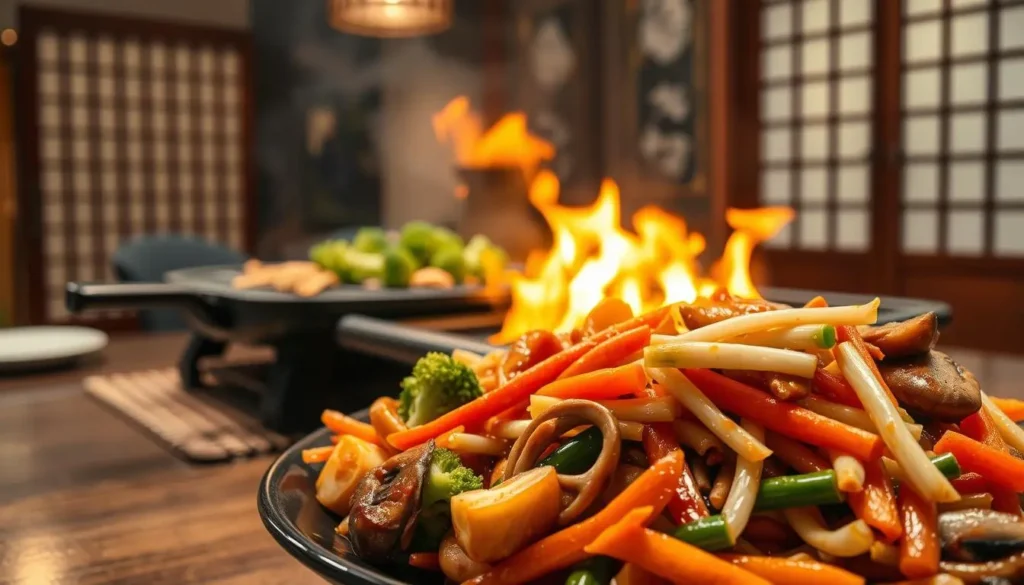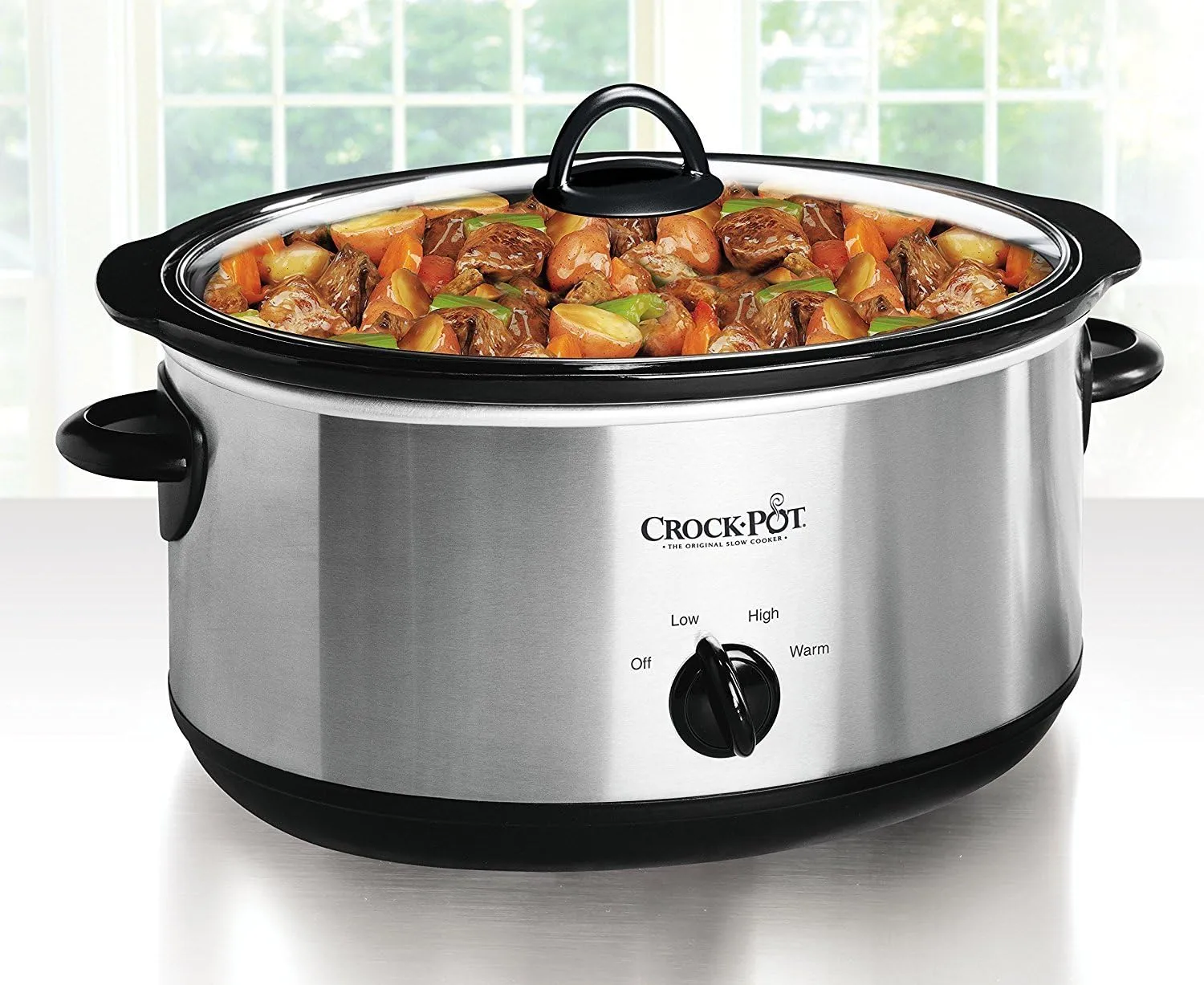Ever wondered why Japanese steakhouses make veggies taste so amazing? It’s their secret hibachi vegetables recipe. Now, you can make it at home in just 20 minutes. It’s perfect as a side dish with steak, chicken, or shrimp.
This recipe combines soy sauce, teriyaki sauce, and fresh veggies. It brings the grill’s authentic taste to your kitchen. Get ready to delight your taste buds and impress everyone!
Table of Contents
ToggleKey Takeaways
- This hibachi vegetables recipe can be made in just 20 minutes, making it ideal for busy weeknight dinners.
- The recipe includes 8 simple ingredients, highlighting the ease of preparation.
- Using 2 tablespoons of butter and 1 tablespoon of oil provides a rich flavor profile.
- Garlic and onions are cooked for 2 minutes for a perfect balance of taste.
- With a calorie count of 72 per serving, these vegetables are both delicious and nutritious.
Introduction to Hibachi Vegetables
Hibachi vegetables bring a unique taste experience from Japanese traditions. The word “hibachi” means “fire grill,” perfect for cooking methods that grill and stir-fry. This method is loved in America, especially in Japanese steakhouses, where chefs perform amazing cooking shows. You can make hibachi vegetables at home without special equipment.
These vegetables are known for their vibrant colors and textures. You’ll find zucchini, onions, mushrooms, and baby carrots in them. At home, you can make a variety of hibachi vegetables, adding healthy flavors to your meals.
Making hibachi vegetables is easy and quick, taking about 20-30 minutes. Using two tablespoons of vegetable oil and one tablespoon of sesame oil adds great taste and smell. This mix helps the vegetables caramelize, giving them that special flavor found in Japanese steakhouses.
Hibachi vegetables are great for any meal, whether it’s a quick dinner or a party. You can add chicken or tofu to make it fit any diet. This way, you can keep the hibachi taste while meeting different needs.
What Makes a Great Hibachi Vegetables Recipe
Creating the best hibachi vegetables recipe starts with quality ingredients. Use fresh veggies like broccoli, carrots, and mushrooms for vibrant flavors and textures. Seasonal produce adds authenticity to your dish.
High-heat cooking is key for that tender-crisp texture. Searing the veggies quickly gives them golden brown edges. This method keeps them crunchy and prevents overcooking. Heat your cast iron skillet for at least five minutes before adding ingredients.
The balance of salty and sweet in the hibachi master sauce is crucial. A mix of soy sauce and other flavorings makes your dish special. Aim for a syrupy sauce for a burst of flavor in every bite. You might find a recipe that gets it just right.
In summary, fresh veggies, high-heat cooking, and balanced sauce make your hibachi vegetables stand out. Focus on these elements to create a dish that captures the essence of hibachi cooking in your kitchen.
Essential Hibachi Vegetables Ingredients
Starting a memorable hibachi vegetables dish means picking the right ingredients. Choose fresh veggies like zucchini, broccoli, onions, and mushrooms. These ingredients mix textures and tastes, making the dish special.
Don’t forget to add condiments to boost your dish. Use soy sauce, butter, and garlic for flavor. Soy sauce adds a salty taste, while garlic brings a nice aroma. A hibachi vegetables sauce is key for a tasty finish.
You can swap out some ingredients if needed. Bell peppers or snap peas work well if you can’t find zucchini. Keeping colors and textures balanced makes the dish look great and taste even better.
It’s important to cook the veggies right. Cut them evenly for even cooking. Heat your pan to 400°F (200°C) and cook them just right. This way, they’re tender but still crunchy.
How to Prepare Hibachi Style Vegetables at Home
Getting ready is key to making hibachi style vegetables at home. First, wash all your veggies well to get rid of dirt and chemicals. Then, cut them into the same size pieces for even cooking.
Make sure to cut them into shapes that look good, like crinkle-cut carrots and matchstick zucchini. This keeps the dish looking great.
Using pre-sliced veggies can save you time. Many stores have fresh and frozen options for hibachi veggies. Keep your workspace tidy and have everything ready before cooking.
This helps you cook like a pro, fast and hot, just like hibachi chefs. This careful prep makes your dish taste better and saves time. You’ll have a meal that feels like a hibachi experience.
Keep your cooking time around 20 minutes, with 5 to 7 minutes for sautéing. Heat your oil and add onions and garlic first for flavor. Then, cook veggies like broccoli and mushrooms until they’re nicely browned.
With good prep, you’ll enjoy the tasty and colorful hibachi style veggies at your dinner.
Step-by-Step Guide to Cooking Hibachi Vegetables
Starting your journey to make easy hibachi vegetables is thrilling. This guide will help you make your vegetables taste great and be perfectly cooked. Begin by preparing your ingredients well, which is key for even cooking. Then, use special cooking methods to bring out the vibrant flavors and textures of the vegetables.
Prepping Your Ingredients
The base of a great hibachi vegetables recipe is in the prep work. Spend about 10 minutes getting and cutting your veggies. Good veggies to use are:
- Onion
- Carrot
- Zucchini
- Broccoli
- Baby bella mushrooms
Using pre-cut veggies can make this step faster. After chopping, sort them by cooking time. This helps you add them at the right time while cooking.
Cooking Techniques for Optimal Flavor
Start by heating a big non-stick skillet or wok over high heat. Put 2 tablespoons of sesame oil in the pan for a smooth cooking surface. Start adding veggies in layers, beginning with onions and carrots, which need 2-3 minutes.
Then, add zucchini, which cooks in about 4-5 minutes. Keep the heat steady and the veggies in close contact for a great sear. Add garlic powder and ginger halfway through to boost the flavor. Finally, add 1 tablespoon of butter to make the veggies richer and creamier.
For an even better taste, try seasoning with Takii mushroom seasoning. The whole cooking time should be under 10 minutes. This makes your prep and cook time just 20 minutes for a tasty dish of easy hibachi vegetables.
Creating the Perfect Hibachi Vegetables Sauce
To make your hibachi vegetables even better, you need a tasty sauce. This sauce boosts the flavor, making your meal more enjoyable. Begin with soy sauce for that classic umami taste. Then, add honey to balance the saltiness with sweetness.
For a simple sauce, mix 1 tablespoon of soy sauce with 1 tablespoon of honey. If you like, add 1 tablespoon of mirin, a Japanese rice wine, for more depth.
Want to make your sauce your own? Change the honey amount for sweetness or add sesame oil for a nutty flavor. Keep tasting until it’s just right. Making it ahead of time is great for meal prep, and it stays good in the fridge for days.
With the perfect hibachi vegetables sauce, your cooking will shine. Use it to make your hibachi meals complete and wow your loved ones.
Easy Hibachi Vegetables Recipe Copycat
This hibachi vegetables recipe brings the taste of a Japanese steakhouse to your kitchen. It’s ready in under 20 minutes. It serves four, making it great for sharing.
To make the best hibachi vegetables, use zucchini, sweet onions, and cremini mushrooms. Cut the veggies into short sticks and quarters for quick cooking. Teriyaki sauce and Benihana garlic butter add a savory flavor.
The nutritional breakdown per serving includes:
- Calories: 80 kcal
- Carbohydrates: 12 g
- Protein: 3 g
- Fat: 3 g
- Sodium: 211 mg
- Potassium: 526 mg
- Sugar: 8 g
- Fiber: 2 g
For an authentic taste, cook the veggies on a large flat hot surface or a wok/cast iron skillet. Stir-frying keeps the veggies crunchy. You can also buy pre-cut veggies to save time.
Pair these veggies with rice and green tea for a complete meal. Sprinkle toasted sesame seeds and chopped green onions for extra flavor.
Feel free to add more veggies like bell peppers, carrots, or cauliflower. A bit of red pepper flakes or hot sauce can also enhance the taste. Try this easy hibachi vegetables recipe at home and enjoy a taste of your favorite Japanese restaurant.
Serving Suggestions for Hibachi Vegetables
Presenting hibachi vegetables can make your meal even better. Start by arranging your colorful veggies like mushrooms, onions, carrots, and zucchini. These add a nice mix of textures and tastes.
For a filling meal, place the veggies over steamed rice. The rice absorbs the tasty flavors well. It’s a great base for your dish.
Pairing the veggies with grilled meats like chicken, shrimp, or salmon is a great idea. This mix offers something for everyone. Adding yum yum sauce brings a creamy touch that goes well with the savory meats.
Finish your dish with sesame seeds or green onions. They add color and flavor, keeping true to hibachi’s spirit. You can keep leftovers in a sealed container for up to three days. Enjoying it again is easy, as a serving size is about 6 ounces.







